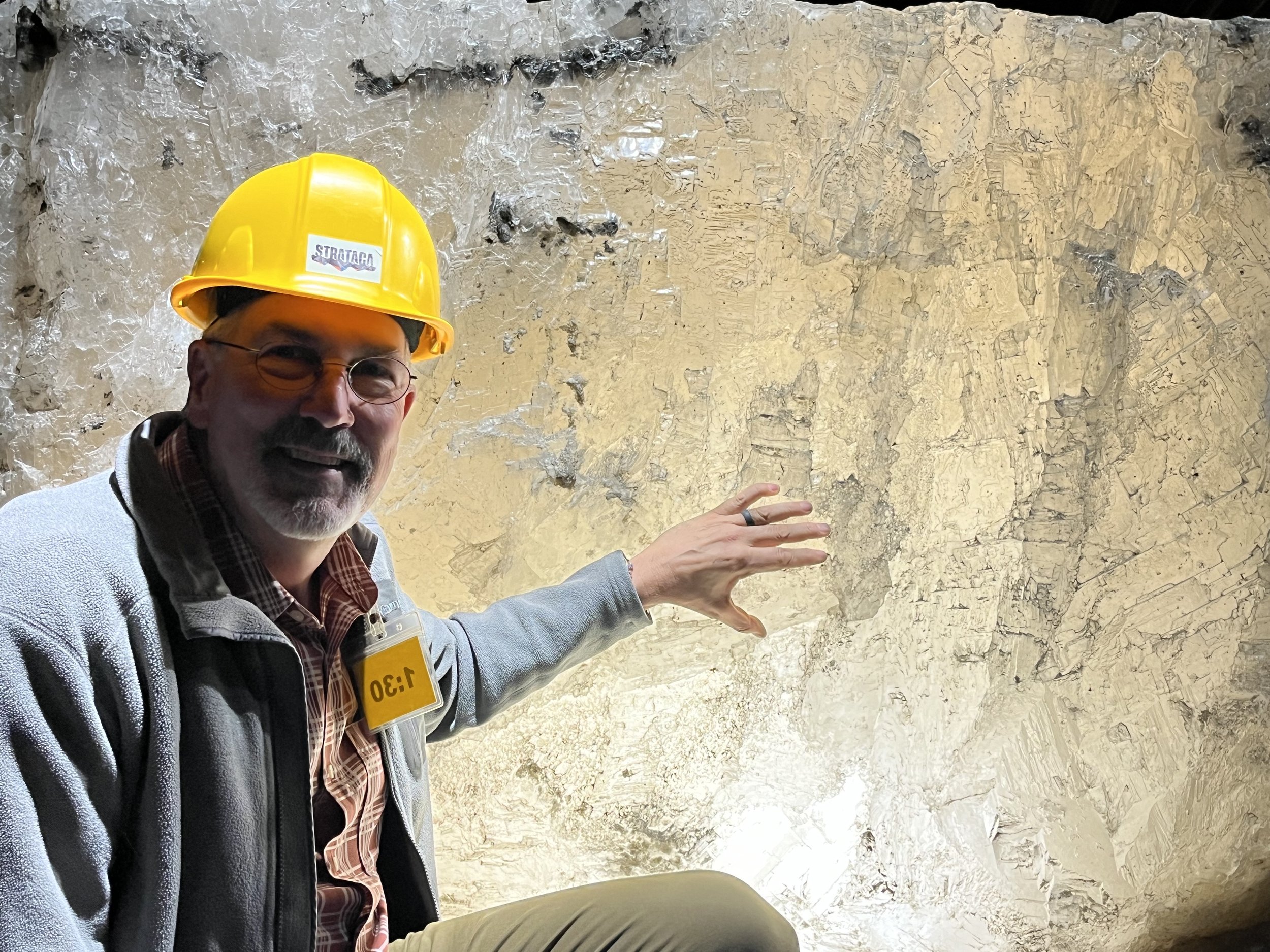Kansas. Underground Kansas: What Can You Do with a Former Salt Mine?
A large underground mine isn’t something most people would expect to find in the U.S. Great Plains. Strataca Mine is located in Hutchinson, Kansas, just south of the city’s municipal airport. Founded in 1871, the City of Hutchison (population 40,000) is 63 kilometers northwest of Wichita. Salt located below the city was deposited 275 million years ago during the Permian period when the present-day central U.S. was covered by a shallow inland sea. Rock salt was first discovered in central Kansas in 1887. However, Hutchinson’s salt deposits weren’t known until a land speculator named Ben Blauchard began drilling exploratory oil wells. In 1923, the Carey Salt Company opened a salt mine in Hutchison. Mining was challenging with workers earning 50 cents an hour filling carts that were moved to the surface using a large elevator. Hutchinson’s salt mine has served other purposes over the years. During the Cold War, the U.S. government leased an apartment inside the mine that contained items needed to rebuild the government in the event of a nuclear attack. The mine was also considered (but never used) as a repository for storing nuclear waste under the supervision of the U.S. Atomic Energy Commission. Today, the former Carney Salt Company mine is open to the public under the name “Strataca” (from the geological term “strata”). Of fifteen salt mines located in the U.S., Strataca is the only one open for tours. Adjacent to the area open to the public are sections still mined by the Hutchison Salt Company. The mine has gained attention in recent years as a storage site for films and documents and as the subject of a 2007 episode of the TV series “Dirty Jobs,” hosted by Mike Rowe.
We parked and walked to the visitor center/museum which was built over one of the mine’s vertical shafts. Inside and surrounding the building are displays that explain the mining process. At our tour time we were given a safety briefing, issued hard hats, and ushered into an area where we waited for the elevator. The mine’s elevator or “skip” was designed to transport four tons of crushed rock to the surface in one load using a “double-decker” lift. The skip’s two levels are now used to transport 30 people, 15 on each level. It took about 90 second to descend 198 meters, a distance equivalent to the height of the St. Louis Arch.
After unloading, we walked into a massive corridor. The 11.2-meter-high ceilings and wide expanses made the large subterranean rooms look like a parking garage. The relative humidity in the mine was a dry 45% and the temperature, a constant 20°C. The mine covers an area of four-square kilometers with passageways that would extend 240 kilometers if arranged in a single line. Twelve-meter-wide rock pillars support the roof in a checkerboard pattern with rooms alternating with supporting pillars. Miners used this “room and pillar” layout to prevent a roof collapse. The first step in removing salt involved blasting. Subsequently, rock was moved to conveyor belts and crushed before being loaded into large buckets and transported to the surface. Because of impurities (mostly bits of shale and anhydrite), the salt cannot be consumed by humans. Most salt mined in Hutchison has been used for snow and ice removal on roads or processed to create salt licks for domestic animals or wildlife.
The first large space we entered, called the Permian Room, contained interpretive displays about the mine’s history and geology. We passed an enormous block of salt illuminated from behind. Nearby, a sign explained that bacteria found in the mine’s salt crystals existed before dinosaurs roamed the earth. We proceeded to a second large room called the Mining Gallery that contains equipment used from the 1920s to the 1970s. In few places were old cars that served as personal transportation as the mine grew larger. To move the cars here they had to be disassembled, transported downward in the elevator, and reassembled. Many were refitted with engines that ran on biodiesel. We passed several large pieces of mining machinery including an “undercutter” employed to make a slot at the base of a wall. Subsequently, holes were drilled in the wall above the slot to insert sticks of dynamite.
Deeper into the mine were interpretive displays that described a 105,000 square meter section not open to the public that is used to store medical records, gas and oils maps, Hollywood film reels, and movie props/costumes. A company called Underground Vaults and Storage operates the climate-controlled facility. A few sample objects are displayed in an alcove including the costume worn by actor George Clooney in the 1997 movie Batman & Robin. In another area visitors can see an original New York Herald front page from the day after President Lincoln was assassinated.
Our tickets included the “Salt Safari,” a one-hour tram ride that took us deeper into the mine. Our guide pointed out graffiti written on walls, piles of trash left by miners, and “floor heaves” and “ceiling sags” where the mine floor and/or ceiling has buckled as a result of overlying weight. Mid-way through the tour our guide stopped the tram near a mound of salt-encrusted rock and invited each of us to pick out a few pieces as a souvenir. After re-boarding the tram, she pointed out openings that were intentionally blocked with discarded dynamite boxes to help channel fresh air through the mine. Another tram tour called the “Dark Ride” took us through an unlighted section of the mine’s passageways. Each passenger was given a small flashlight to illuminate points of interest. A few times a year the mine is used for “5K” runs with lighted cones marking the route.






